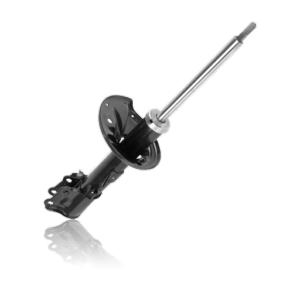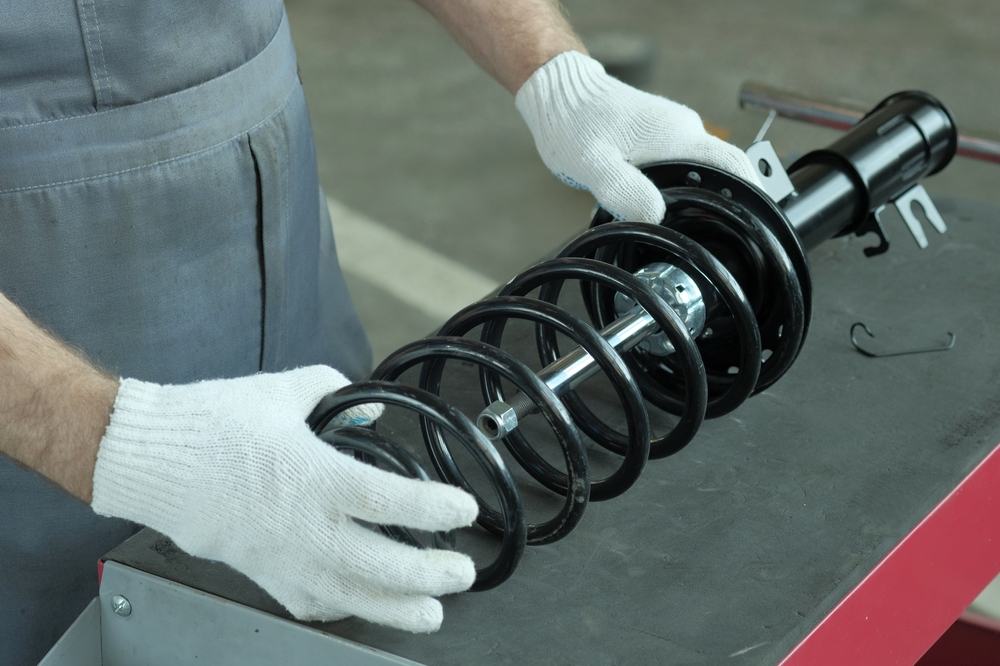Shock absorber
SELECT YOUR VEHICLE TO FIND THE RIGHT PARTS!

All you need to know about shock absorbers
The shock absorber belongs to the group of easily wearing parts that are essential for the safety of the vehicle. For this reason, all the often-used vehicles should have to be checked by an expert, and the shock absorbers shall be replaced as necessary.
Shock absorbers convert mechanical energy to heat, thus absorbing the vibration of the wheel and the chassis. It ensures not just the comfort, but also the safety. Shock absorbers are available with different fill and design.
Types and designs of shock absorbers
According to design:
- Double tube:
- The benefit is the simplicity of the shock absorbing system.
- The drawback is the faster warming, which could lead to foaming of oil, and could deteriorate the quality of operation.
- A shock absorber has a work cylinder installed in the container housing.
- The piston connected to the rod moves downward when compressed.
- In the process the oil is pressed through a valve into the lower part of the device and into the outside tube.
- The process takes place in the opposite order when the shock absorber is extended.
- The design of shock absorbers can be traditional (pneumatic) or gas operated. In the latter case the outside tube contains nitrogen gas at 5 bar pressure instead of air. This design reduces the tendency of oil to foam, the shock absorber reacts more quickly and makes the system tighter.
- Single tube:
- The drawbacks mentioned for the double tube version do not appear here.
- The gas space at the bottom performs the task of the outside tube.
- The shock absorber is dived into two parts with a plunger. The volume change caused by the moving plunger is counteracted by the gas having a pressure of about 30 bar.
Signs of faulty shock absorber
- Wobbling vehicle body.
- Increased braking distanced.
- Extensive lean of vehicle during turning.
- Knocking, rattling noise during traveling.
- Uneven wear of tyres.
- Oil precipitation on the part.
- The vehicle sinks, pitches during acceleration and deceleration.
Reasons of faulty shock absorber
- Poor quality road surfaces.
- Aggressive driving style.
- Neglecting the recommended service interval. (Most of the manufacturers recommend replacement after 20,000 km run, but at least checking once a year and replacement after 80,000 km.)
- Drastic temperature fluctuation.
- The piston rod becomes dirty due to the damage to the dust shield, which causes wear.
- Lack of oil in the container.
- Fault of parts (the single tube versions are particularly sensitive to this)
Replacing the shock absorber
The faulty shock absorbers have to be replaced, usually they are not repaired. The shock absorbers shall be replaced in pairs.
"
FAQ
Look around in the help center.
How do I know the shock absorbers need replacement?
- The vehicle body wobble during travel
- Increased braking distance
- The vehicle slows down during turn
- Knocking and other noises during travel
- Uneven wear of tyres
- Oil stains on the part
- The vehicle sinks during acceleration and deceleration
What could cause the fault?
- Poor quality of road surface
- Aggressive driving style.
- Inadequate service interval
- Intrusion of dirt or chemicals
- Lack of oil in the container
How should I install a shock absorber by myself?
The faulty shock absorbers have to be replaced, usually they are not repaired. If a shock absorber breaks, then the other one being on the same axle shall also be replaced. You might do the replacing yourself using the following operations:
- Dismount the wheels
- Disconnect the brake hoses if necessary
- Disassemble the upper strut, then the lower one too.
- Remove the spring with a special plier
- Put the new part into the place of the old one, and perform the above operation in reversed order
